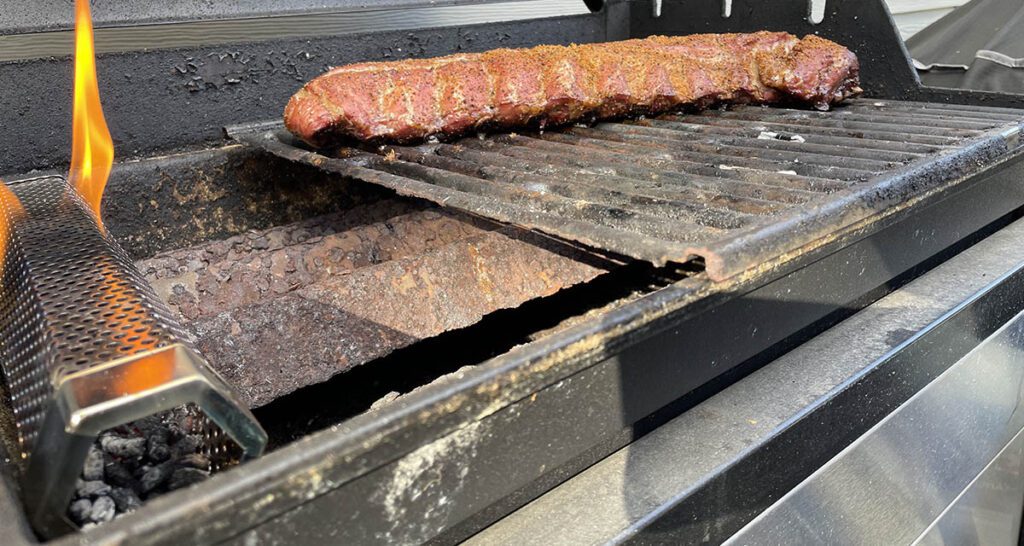Smoking meats is a traditional cooking technique that uses smoke from burning wood or charcoal to flavor and slow-cook various types of meats. The process can take several hours to a day, depending on the type and cut of the meat. Choosing the right type of wood is crucial to achieving the desired smoky flavor, and different woods have different flavors. Temperature control is essential to prevent overcooking or undercooking the meat. Marinades, rubs, and sauces can enhance the overall flavor profile of the meat, and pairing them with the right wood and meat can create a tasty BBQ.
The Art of Smoking Meats: Techniques and Flavors for Deliciously Smoky BBQ
Smoking meats is a tradition that has been around for centuries, and it remains a beloved cooking technique today. It involves using smoke to flavor and cook various types of meats to perfection. Smoking meats can be a challenging and time-consuming process, but it is well worth the effort for the incredible flavors and tender textures that result. Whether you are a beginner or a seasoned pitmaster, the following tips and tricks can help you achieve deliciously smoky BBQ.
The Basics of Smoking Meats
Before diving into the specifics of smoking meats, it is important to understand the basic principles behind this cooking technique. Smoking meats involves slow-cooking them at a low temperature over a period of time. The process can take anywhere from a few hours to an entire day, depending on the type and cut of the meat being smoked.
During the smoking process, the meat is exposed to smoke from burning wood or charcoal. The smoke not only adds flavor but also helps preserve the meat by inhibiting the growth of bacteria. The goal of smoking meats is to achieve a perfectly juicy and tender texture while infusing the meat with rich smoky flavors.
Types of Wood to Use for Smoking Meats
Choosing the right type of wood is crucial to achieving the desired smoky flavor for your BBQ. Different types of wood have different flavors, and some pair better with certain types of meats than others.
Here are some of the most popular woods used for smoking meats and the flavors they impart:
- Hickory – sweet and pungent, perfect for pork and beef
- Mesquite – strong and bold, best for beef and game meats
- Apple – sweet and mild, good for poultry and pork
- Cherry – fruity and sweet, pairs well with beef and pork
- Pecan – nutty and mild, great with chicken and pork
- Oak – hearty and medium-bodied, suitable for all types of meats
The Importance of Temperature Control
One of the most important aspects of smoking meats is maintaining a consistent temperature throughout the cooking process. The ideal temperature for smoking meats is between 225°F and 250°F. Too low a temperature can result in undercooked meat, while too high a temperature can lead to tough and dry meat.
To ensure temperature control, the use of a smoker thermometer is highly recommended. You can also use a digital thermometer to monitor the internal temperature of the meat. Remember to avoid opening the smoker too often, as this can cause a drop in temperature and prolong the cooking time.
The Role of Marinades, Rubs, and Sauces
While the smoky flavor is the star of BBQ, marinades, rubs, and sauces can enhance the overall flavor profile of the meat. Marinades are typically used to tenderize and infuse the meat with flavors before smoking. Rubs, on the other hand, are used just before smoking to add flavor and texture to the meat. Sauces can be brushed onto the meat during the last 30 minutes of smoking to create a sticky and flavorful glaze.
When selecting or making marinades, rubs, and sauces, keep the flavors of the wood and the type of meat in mind. For example, a sweet sauce works well with hickory-smoked pork, while a tangy rub complements mesquite-smoked beef.
Conclusion
Smoking meats requires patience, skill, and a bit of experimentation. With the right equipment and techniques, you can create deliciously smoky BBQ that will leave your guests begging for more. Remember to choose the right type of wood, maintain a consistent temperature, and use marinades, rubs, and sauces to enhance the flavors of your meats. Happy smoking!
